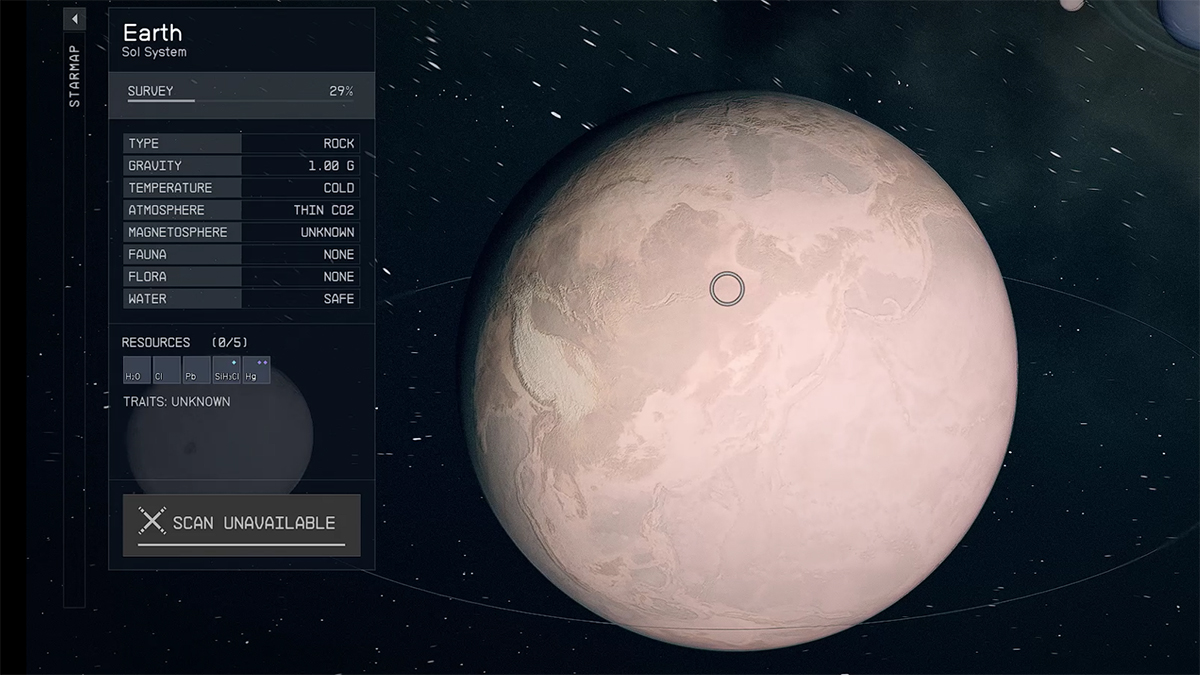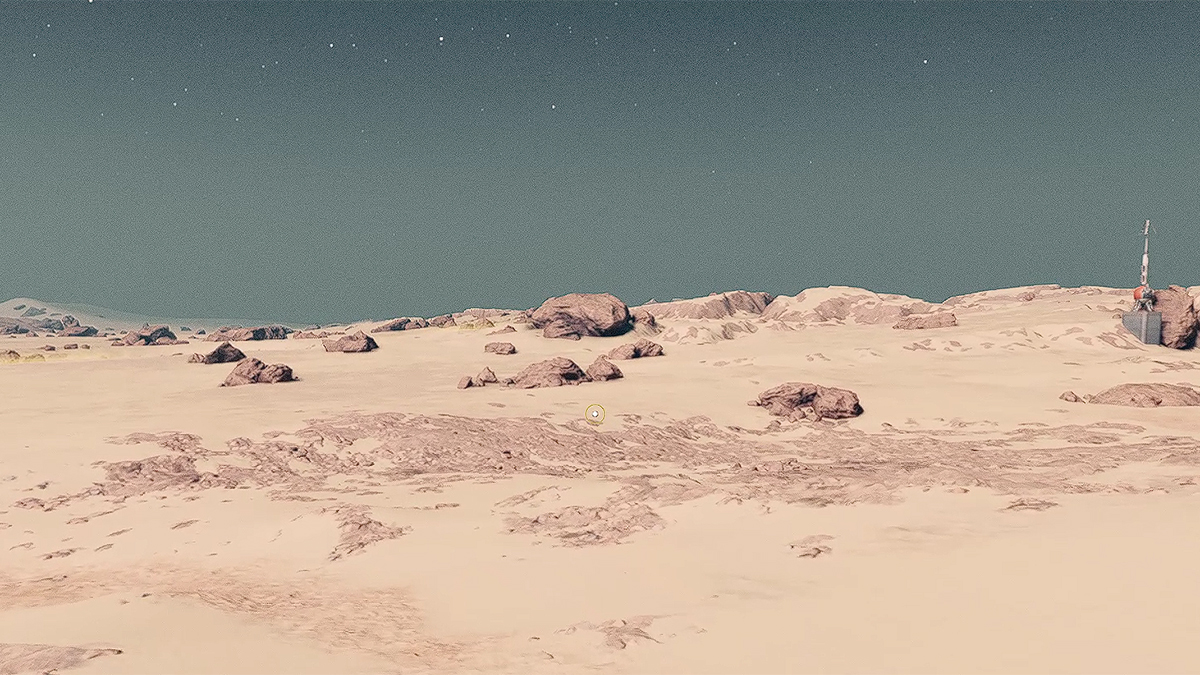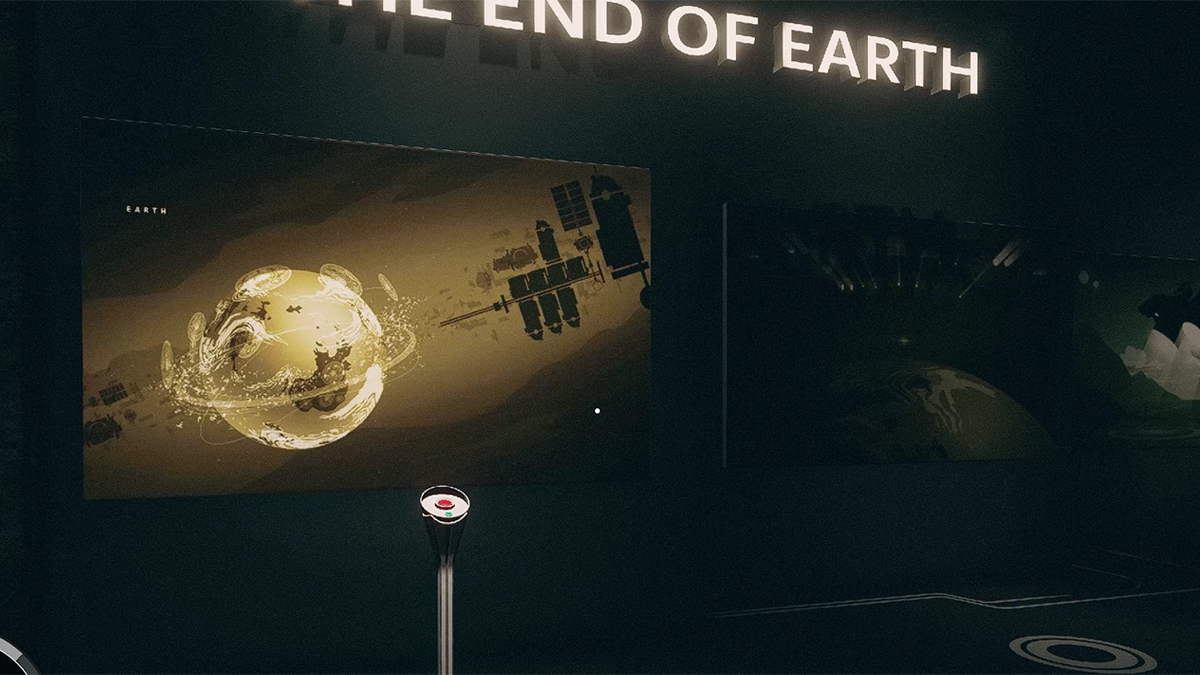When you’re playing a video game for work, you often have to approach situations in ways that you might not in a normal playthrough. As part of my process for figuring out what The Escapist should cover for Starfield, I decided I really should take a break from my normal chaotic good approach to RPGs and try being an absolute sentient garbage bag of a person. In the early part of this experiment, I pistol whipped a random civilian on New Atlantis and immediately surrendered, expecting to pay a fine. At the time, I didn’t know my first arrest on New Atlantis would trigger a sequence of events that led to me seeing what happened to Earth in Starfield — and it broke my heart.
Initially, I hadn’t intended to pistol whip the civilian. I was gathering intelligence on the comparative cost of cheese and other products to a human life. I pushed in a control stick to see what would happen, and clubbed the civilian in the back of the head. Being bad at knowing what buttons to hit isn’t a particularly sound legal defense, so I surrendered. I was then taken to meet Commander Ikande of United Colonies SysDef, which is a defense organization that’s part of the UC Navy. He tried to pressgang me into taking on the Crimson Fleet. Since I was in my jerk phase and just trying to find out the price of cheese, I told him to shove it. He sent me to Mars in response.
After getting out of jail on Mars, I opened my star map with the intention of taking my ship, The Frontier, back to New Atlantis, as I had still not, by that point, achieved my objective of finding the most ridiculous thing against which to compare the cost of a human life in Starfield. That’s when I noticed Earth was right there. Since I was playing the game with an eye towards what articles you, my humble reader, might click on, so that I might continue to make a living at this job, I decided to check out Earth. As I’ve learned from experience, people really care about what happened to Earth in sci-fi media.

I set course for Earth, and I was confronted with the image of a desiccated planet, the color of sand and dunes. My survey data on the left revealed that there was no fauna or flora on the planet. The atmosphere was now made up of CO2. Even the oceans had disappeared under the sands, evaporating in some extinction-level event I couldn’t comprehend. I hadn’t done any research on what had happened to Earth in Starfield before booting up the game. Still, I didn’t expect to find the planet I call home uninhabited.
I landed on the East Coast of the United States. Although I’m originally from Canada, I now call the East Coast of the US my home. It’s an area that mixes megacities with unbelievable stretches of greenery and nature. It’s an area where the highways stretch out endlessly into the horizon, and every time I have to drive somewhere, I curse the very concept of cars and the people behind their wheels.
My spaceship touched down on the East Coast, and the only things I found were sand and rocks. Occasionally, there were mineral deposits and other geographic oddities worth checking out, but mostly, the place was a testament to desolation. The life that I’m so used to seeing in the area where I live was gone. There was no trace left that humanity had ever been on the planet. At the risk of sounding like a pretentious English Major — which I was — the scene brought to mind Percy Bysshe Shelley’s “Ozymandias.” In the oft-quoted poem, the narrator recounts meeting a traveler who found a destroyed statue in the desert, of which nothing except a pair of legs and a plaque remained. The plaque tells its reader that the statue was of Ozymandias, King of Kings, and to “look on my Works, ye Mighty, and despair!” Only, there is nothing left of Ozymandias’ work except the plaque and the destroyed legs. Time erased the King of Kings.
In the case of Earth in Starfield, every single thing I would ever touch, see, think about, love, appreciate, and hate was gone, a possibility that, due to potential catastrophes such as climate change, could come to pass in our real world. I teared up.

I wanted to understand what happened to Earth in Starfield more, because I figured looking into the lore might help me process the emotions I was feeling. On my quest to learn about Earth’s fate, I initially set my sights on new Homestead, an early colony on Saturn’s moon Titan. Inside, I found a rough, tumble place that could only be described as spartan. There’s also a museum where tourists can look at different artifacts from Earth, including early computers, books, baseballs, and more. One item stood out to me more than the others, though. In this museum, you can find a hockey stick from “a 1988 championship game” in Edmonton, Alberta, Canada.
To clarify the reference, the 1988 Stanley Cup was a match-up between the Edmonton Oilers and the Boston Bruins. The Oilers, who were absolutely dominant in the NHL with legendary players such as Wayne Gretzky and Mark Messier, won the game. The museum exhibit didn’t (and probably due to real world copyright issues couldn’t) reference any of those teams or their players. It didn’t even mention the NHL. One of the mightiest hockey dynasties in the history of the NHL — a dynasty that, growing up as a boy in Canada in the ’90s, was talked about constantly — was reduced to an explainer card in a museum on one of Saturn’s moons. It was a heck of a “look on my Works, ye Mighty, and despair!” moment.
No closer to figuring out what happened to Earth, I reached out to some of my colleagues here at The Escapist, and they pointed me to an exhibit in the MAST building on New Atlantis. The exhibit was in the Vanguard Orientation Hall. I returned to New Atlantis, passed by the spot where I’d pistol whipped someone earlier, and went to the exhibit, which told me that in 2150, scientists learned the planet’s magnetosphere would collapse, resulting in the end of life on Earth. This prompted humanity to lean heavier into space exploration and colonization, and so even when Earth was soon after rendered uninhabitable, the human race survived.

I’ve spent the last day or so reflecting on that experience. Seeing Earth destroy, and so much of the culture I know and love today essentially lost, broke my heart in a lot of ways. And at the same time, there’s more to the story than Earth in Starfield. Humans moving into the stars is a testament to our ability to adapt and move forward. As creatures, that’s something we excel at. The human spirit is a force that looks for solutions to the impossible. We see mountains, and we climb up them because they’re there. We travel to moons and planets because they’re there. Human life can thrive in the spartan conditions of New Homestead and grow into the sprawling metropolis of New Atlantis.
This isn’t to say that we should abandon Earth. For the love of all that’s holy, do whatever you can to keep our world from getting destroyed by climate change. The next generation deserves to grow up with lakes they can swim in, forests they can visit, and all of the incredible natural privileges that have been afforded to so many living today. Still, there’s something comforting in being reassured that, as a species, we will fight like hell for a tomorrow. The loss of Earth is a tragedy in Starfield, but humanity’s continued existence in the face of that devastation is a triumph.
KEEP READING: Starfield Puts a Price on Human Life, and It’s Depressingly Cheap